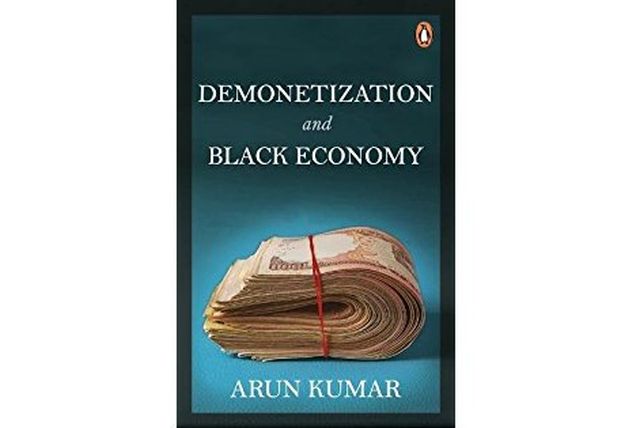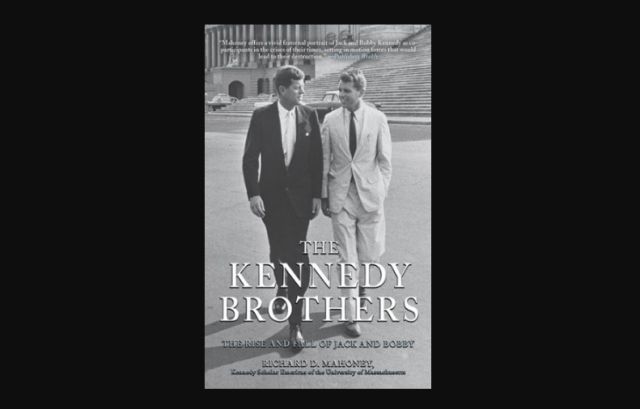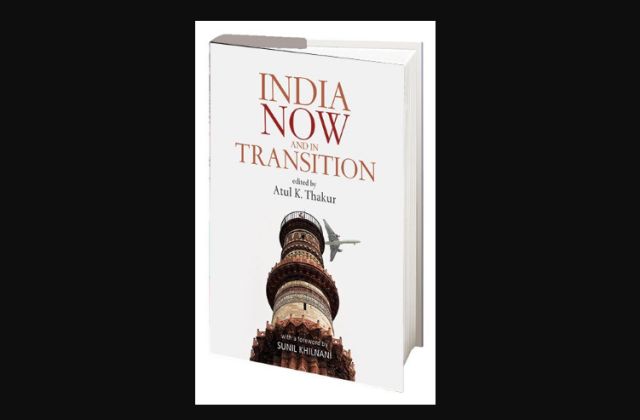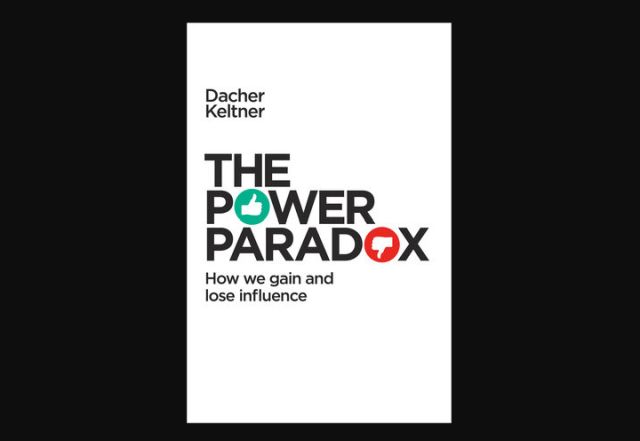
by admin | May 25, 2021 | Books
 By Himani Kothari,
By Himani Kothari,
Title: Miss Laila Armed and Dangerous; Author: Manu Joseph; Publisher: Fourth Estate; Pages: 210; Price: Rs 499
A lanky woman, arms akimbo, wearing a tucked-in white shirt, divided skirt and red high heels is standing with her back to us. There’s a mike in front of her and she’s addressing a nondescript crowd, waving flags — the ‘Bhagwa Dhwaj’ (the saffron flag of Shivaji, adopted by the RSS) to be specific. But what catches the eye is her dress — specially her khaki shorts.
The cover of Manu Joseph’s “Miss Laila Armed and Dangerous” is telling.
“Just the sight of Hindu patriots this way in the uniform of the Sangh reminds Muslims of death,” writes the novelist-journalist in his new book.
The woman in the Sangh outfit is Akhila Iyer, one of the protagonists in the book. And if the way she dresses is any hint, Miss Iyer is that rare breed that has both a sense of humour and strong political views. She is all that and much more.
In “Miss Laila…”, Joseph is having fun. He is unapologetic and out to offend. And he spares no one. If you’re a Right-winger or a Left lib, Arundhati Roy fan or Modi bhakt, a feminist or an activist or a journalist, Anna Hazare follower or Irom Sharmila sympathiser — this book is NOT for you. Or maybe it is.
The novel opens as a political satire, with Miss Iyer — a neurosurgery student who has a love-hate relationship with Left liberals (in possible revenge at her mother who had abandoned her to carry out her ultra-Left activities) — playing pranks on everybody, and exposing their hypocrisy.
As far as the “patriots” go, Joseph also makes fun of them, though in a subtly indirect way, with characters like Damodarbhai — DaMo for short — and his minions, a certain Professor Vaid, and through “White Beard”.
There are two gripping narratives running parallel to each other. One involves Miss Iyer helping a man caught in the debris of a collapsed building survive by crawling to him through a tunnel and feeding him. Then he whispers to her something which has the intelligence agency racing against time to avert a terror attack.
The other concerns Miss Laila — of the title — whose character is loosely based on the 19-year-old Ishrat Jahan, an alleged terrorist killed in a “gunfight” with police while on the way to assassinate the then Gujarat Chief Minister Narendra Modi, whom most of us will only recognise from that picture of four dead bodies strewn on a road besides a blue Tata Indica.
There have been many theories on the Ishrat Jahan case, some holding that she was an innocent girl who got mixed up with wrong people. Joseph seems to subscribe to this view in his fictionalised tale that is too close to the real thing.
“Miss Laila…” is not an investigative piece in that it doesn’t provide any new information. But it brings a fresh perspective to the story of a “hip” Ishrat Jahan from Mumbra — a sister to six siblings, their idol and bread winner. Instead of letting the character of Laila speak for herself, the author lets her younger sister to be the narrator and that’s what humanises the story.
With his earlier works “Serious Men” and “The Illicit Happiness of Other People”, Joseph has already established himself as a prolific writer in English. With “Miss Laila…” he has set a new benchmark for anyone looking to spin newspaper headlines to write an everyday politics-inspired thriller.
While anyone can write a political satire-cum-thriller, which is at once funny and dark, it is a writer like Joseph who can make you question and laugh at your beliefs. (Unless you are a bigot, in which case the only literature you should be reading is that recommended by Dina Nath Batra).
Joseph addresses many issues in this stylishly-written 210-page book. Capturing the themes of identity, selfishness and inefficiency, he talks about the life of extras in the film industry, poor disaster management in the country’s financial capital and journalists who swing facts to show the poor in worse condition than they actually are in. He does all this while maintaining the flow of the narrative and never losing the plot.
And there is never a dull moment.
In one chapter, the author goes deep into the ways of the Indians with his description of “faces only an Indian can make”. Like when “he crosses the road like a cow, and is startled by a truck… when boys fall off trains because they were dangling from the doorways, when illegal homes built on infirm soil collapse, when pilgrims are squashed in annual stampedes inside narrow temples”.
In another, flaying the Hindu outfits’ claims of Muslims reproducing to take over the world, Joseph says that one thing Damodarbhai would never say out loud is “reason why the Muslim population is growing faster than the Hindu… Muslims don’t kill their girls in the womb”.
Writing about the Indian Marxists and their love for French wines when they wish to discuss poverty and revolution, he says, “Actually, they are happy with South African wines, too.”
There is so much happening, the moment you finish reading the book feels like you just got off a roller coaster. And you want to take the ride again. Luckily for us, the book is being made into a movie.
(Himani Kothari can be contacted at himani.k@ians.in )
—IANS

by admin | May 25, 2021 | Books
 By Mayabhushan Nagvenkar,
By Mayabhushan Nagvenkar,
Book: Demonetisation and the Black Economy; Author: Arun Kumar; Publisher: Penguin Portfolio; Price: Rs. 499; Pages: 300
Reams of paper have been inked and gigabytes of data published online lauding, berating, reporting and analysing in breathless fashion the impact of Prime Minister Narendra Modi’s controversial decision on November 8, 2016, to demonetise Rs 500 and Rs 1000 notes.
So what makes this book on the contentious subject by Arun Kumar, a former economics professor at the Jawaharlal Nehru University, relevant a little over a year after the major decision?
In a paragraph, the book cuts away the rhetoric and breathless commentary to provide a systematic argument as to how the move, which was meant to eliminate or largely minimise corruption in India, didn’t live up to its billing. The book also supplements logically articulated arguments with cold facts to make its point that demonetisation was a dramatic, authoritarian and political step taken to fool people, rather than to eliminate corruption.
Arun Kumar also makes a broader point about how the exercise of demonetisation has worsened the already existing deep social divide in the country by triggering a social and economic crisis, painting a grim end-of-the-rainbow picture of political and social instability in the country.
Over 300 pages, the author juxtaposes Modi’s statements and the gradual shifting of goalposts by the government after realising that the biggest demonetisation drive in the world, which was aimed at pulling back 86 per cent of the currency in circulation, was not panning out according to plan.
It also gives a sectoral break-up of the impact of demonetisation as well as delves in detail into how it failed to tackle the menace of black money.
“Demonetisation was a technical device that does not impact the causes of generation of black economy, namely, the political or social aspects. It would do nothing to change the ethics of the elite who generate black money. They would continue to do so. It does not address the issue of accountability of the rulers, which is so crucial to check the growth of the black money,” Arun Kumar says in his assessment, while also being critical of the manner in which the media — which as a sector also suffered a blow by the economic exercise — indulged in shrill reportage about a serious subject, misleading the people.
Describing demonetisation as “one of the most important economic events in the country” over the last two decades, Arun Kumar asserts that the long-term impact of the exercise would be adverse. The book also highlights the lack of advance planning by the government, citing reasons of secrecy about the dramatic move, as a major lacuna in the lead-up to the decision.
The book also tries to mend the misconception that “black means cash” and warns that shortage of money in the economy was a serious matter which has seriously impacted the organised and unorganised sectors.
For the author, demonetisation is a “big failure” of an “ill-conceived policy” and one whose cost outweighs any perceived benefits in the near or distant future, akin to chopping off the nose to cure a cold.
In sum, the book serves as a ready primer which decodes the socio-economic impact of one of the biggest decisions of the National Democratic Alliance government, which is expected to show demonetisation as a key achievement in the next general election scheduled for 2019.
(Mayabhushan Nagvenkar can be contacted at mayabhushan.n@ians.in)
—IANS

by admin | May 25, 2021 | Books
 By Vikas Datta,
By Vikas Datta,
Title: The Kennedy Brothers; Author: Richard D. Mahoney; Publisher: Arcade Publishing; Pages: 480; Price: Rs 799
No other family occupies as significant a position in American politics as the Kennedys — especially the charismatic John F. ‘Jack’ Kennedy. His truncated term doesn’t prevent him from being the most popular US President, in his time and ahead, and decades later, still a name to serve as the ultimate political standard.
“Senator, I served with Jack Kennedy. I knew Jack Kennedy. Jack Kennedy was a friend of mine. Senator, you’re no Jack Kennedy,” Democratic Vice Presidential candidate Lloyd Bentsen told his Republic rival Dan Quayle in their 1988 election, after the latter sought to equate himself with the late President, leaving him red-faced.
In 2017, which is JFK’s birth centenary, there is as much, if not more, interest in the 35th President, especially given the Oval Office’s present occupant. But while all aspects of President Kennedy’s life and tenure have been much written about, one has never received its due attention.
This is his relationship with his younger brother and Attorney General Robert F. ‘Bobby’ Kennedy, who outlived him but didn’t outgrow him, not only sought to carry forward his legacy but even extended it — and was also cut down at his prime with much potential left unfulfilled. And it is this story of Jack and Bobby’s intertwined yet tragic lives that politician-turned-scholar and author Richard D. Mahoney tells here, in an updated version of his 2011 book.
Mahoney, whose father was friends with Bobby Kennedy, says that though he had diligently studied the Kennedy papers, the real epiphany came when George Ball, an Under Secretary of State during the Kennedy years, invited him to look at his transcribed telephone conversations, numbering nearly 10,000 and was “stunned at what they revealed”.
“The picture they painted of the Kennedys was very different from the treasured anecdotes, those memorable and canonized speeches, or the top-secret memos covering ‘policy options’. What emerged first were traits common to powerful men — expediency, calculation and manipulation.
“But the transcriptions also revealed other qualities that were, I believe, unique to the Kennedys…”
And it is these he dwells on here. Though they were a different set for both the brothers, born eight years apart and possessing varied temperaments and sensibilities, he shows how they also shared a close bond and some common traits, especially their marked capacity to be both “self-creative and self-destructive” which goes a long way in explaining their rise and their success, as well as their defeat and fall.
This trait eventually leads us to one of the biggest mysteries of Jack and Bobby Kennedy’s lives and deaths — the plots behind their assassinations.
Mahoney, however, does not go into the legions of conspiracy theories, ranging from plausible to wacky, that surround their deaths, especially JFK’s, or echo that mysterious source (played by Donald Sutherland) in Oliver Stone’s “JFK”: “… Oswald, Ruby, Cuba, The Mafia, keeps ’em guessing like some kind of parlour game, prevents ’em from asking the most important question: Why? Why was Kennedy killed? Who benefited? Who has the power to cover it up?”
However, what he does is postulate how the powerful enemies — listed above — gathered jointly, or singly, could have been someway linked to their untimely violent deaths. And he leaves us to draw our own conclusions.
While most of the lives of Jack and Bobby, and their careers till that fateful trip to Dallas in November 1963, may be known from other works, what distinguishes this is the subsequent life of the younger Kennedy, who always sensed that it was he who had somehow contributed to the assassination.
Here we see his familiarity and fondness with the works of Albert Camus, attacking apartheid during a visit to South Africa, seeking a better life for African-Americans, and joining Hispanics in their agitations for rights and fairer wages — till his success in the California primary for the 1968 Democratic presidential nomination ended tragically in a Los Angeles hotel.
Political biography and analysis at its finest, this work will be required reading for not only Kennedy fans but for anyone interested in politics — and the extremely high price that power levies.
(Vikas Datta can be contacted at vikas.d@ians.in)
—IANS

by admin | May 25, 2021 | Books
 By Vikas Datta,
By Vikas Datta,
Title: India Now and in Transition; Editor: Atul Thakur; Publisher: Niyogi Books: Pages: 448; Price: Rs 599
Stretching from icy mountains to the boundless oceans and from arid deserts to tropical forests with more varied topography in between, India’s geographical diversity is well complemented by its political, religious and cultural plurality, and a variety of issues, problems and contradictions, both generic and specific, that have affected, and will continue to affect, the country’s course.
A free nation for seven decades now, India still faces contests over its “idea” of itself with the concept so far being challenged by a new dominant political force. A country which has managed to reach the Red Planet is still riven on the ground by social disparities and abuse. A nation which prides itself on a universal and well-integrated diaspora still has sections who distrust foreigners.
While Indians are making their name globally, there are still those — including ministers — who would seek to confine them to primal, parochial identities that arise from circumstances of birth rather than conscious choice.
Any one who seeks to make sense of the country or frame projections where it is heading, or can head, have their work cut out for themselves — but that doesn’t stop many from the ambitious but necessary venture. Like public policy professional and writer Atul Thakur, who engages an eclectic ensemble of experts, established and emerging, to examine the future in all aspects.
Here politicians, bureaucrats and academicians are also joined by authors and journalists. For, as academician and author Sunil Khilnani observes in the foreword, “Where journalism and the social sciences are developed, professional fields designed above all to improve our judgment and choices, it behoves practitioners in those fields to offer us some illumination along the way.”
While some of the over three dozen essays included here have come out elsewhere earlier, they remain relevant and Thakur supplements them with many especially commissioned for this volume, the sequel to his “India Since 1947: Looking Back at a Modern Nation” (2013).
But the present work is not intended to be a “prognosis (which is often confused with prediction) but rather an inquiry into futures based on current happenings”, by maintaining a “causal linearity” to arrive at the “likeliest” scenario.
The essays, divided into five areas — politics and governance, economics and development, security and foreign policy, society and culture, and language and literature — not only go into the issues and problems of the topics they discuss but also take the perceptions about them, which, as brought out, can be as tough to tackle.
In the first section, Ramchandra Guha sets the pace with an illuminating exposition on selecting the greatest Indians and Shashi Tharoor weighs in on Dr Ambedkar’s contribution. But compelling reading here is Singapore-based academician Robin Jeffrey’s penetrating pitch about the chequered course of land reforms in India and its impact on the realty sector.
Two bureaucratic contributions also stand out. T.S.R. Subramanian, a well-regarded Chief Secretary in Uttar Pradesh before he rose to become Cabinet Secretary, gives a well-reasoned overview of corruption, and Wajahat Habibullah, who served extensively in Jammu and Kashmir, writes about the troubled state’s future with insight and passion but is not too optimistic on the future.
One of the outstanding contributions is in the social and culture component, where journalist Daipayan Halder brings out the “subaltern voice”, of the Dalits specifically, in a riveting piece that will challenge our perceptions of our progress on the equality issue despite the Constitution’s high ideals and the pious protestations of politicians of all shades. Abhay Mohan Jha’s view of mofussil life and Abdullah Khan on identities in an ideal “Idea of India” also make for thoughtful reading.
Other sections also have absorbing entries — writer Manu Joseph on the issue of genetically-modified crops, Samir Saran and Mahima Kaul’s piece on India’s cybersecurity prospects, and Namrata Rathore Mahanta and Banibrata Mahanta’s views on the current and future of the Indian novel.
In all, it is a valuable compendium of well-reasoned, persuasive (but never dogmatic) and jargon-free views on a host of major issues — and this is important. For these are not just the province of the government to be confronted but also need discussion at the citizens’ level. This is our responsibility and books like these set the ball rolling.
(Vikas Datta can be contacted at vikas.d@ians.in)
—IANS

by admin | May 25, 2021 | Books
 By Vikas Datta,
By Vikas Datta,
Title: The Power Paradox; Author: Dacher Keltner; Publisher: Penguin Random House UK: Pages: 208; Price: Rs 499
It is termed the ultimate aphrodisiac. It is that intense but intangible phenomenon that runs countries, corporations and society and is involved, in some way or the other, in how we relate to each other both professionally and on a personal level. But have we been seeing — and using — power correctly all these centuries?
No, says an eminent psychologist and researcher of human emotions and connections, for power does not, as we think, involve “extraordinary acts of coercive force”. Nor is it the sole preserve of statesmen and dictators, corporate tycoons, ambitious employees or bullies (schoolground or elsewhere).
And above all, as Dacher Keltner argues here, power is intrinsically ensnared in a paradox — in a pattern of social living that is at the heart of our daily interactions and the shapes that our lives will eventually take. “It has profound implications for whether you will have a sexual affair, break the law, suffer from panic attacks, be levelled by depression, die early to a chronic illness, or find purpose in life,” he says.
The power paradox, as he holds in this book, is that “we rise in power and make a difference in the world due to what is best about human nature, but we fall due to power due to what is worst”.
But before Keltner, a professor of psychology at the University of California, Berkeley, goes on to elaborate on the power paradox and how we can overcome it (and why), he first tells us why we have been seeing and using power so wrong so far.
Much responsibility, he says, can be laid at the door of one slim but influential political tract for most understanding of power has been “deeply and enduringly” shaped by Machiavelli’s “The Prince”, in which the 16th century Florentine statesman argues “power is, in its essence, about force, fraud, ruthlessness, and strategic violence”.
But Keltner argues that this is an unusually restrictive — and dated — view, which cannot explain significant events like the abolition of slavery, toppling of dictators, end of apartheid and success of the civil rights movement, or even the social changes brought about by scientific advances, social media, films, etc.
Then what should we see power as? He pitches for “the capacity to make a difference in the world, in particular by stirring others in our social networks”, thus expanding its scope beyond “rare individuals in dramatic moments of their highly visible lives” or places like the boardrooms, battlefields or the floors of legislatures.
And after the new definition of power — as well of status and control — and its purpose, he goes on to identify the surprising source of power, the way it can be maintained, how it is abused and what problems its lack can lead to.
In his new “science” of power — and powerlessness, which he emphasises is not about mere leadership — Keltner identifies 20 of its principles. He also stresses that they are certainly not about politics — though they can help in understanding of some episodes in leaders from Stalin to John F. Kennedy and also some political dynamics.
The principles — 12 neutral or more or less positive ones and the rest negative — include some counter-intuitive propositions like “power comes from empowering others in social networks”, “groups give power to those who advance the greater good”, “enduring power comes from empathy”, “power leads to self-serving impulsivity” and “stress defines the experience of powerlessness”.
Taking four each per chapter, Keltner discusses these principles at length, with examples drawn from psychological research in the lab and outside, the behaviour of chimpanzees, Charles Darwin’s correspondence, the victory of Abraham Lincoln in the presidential race, William Golding’s unsettling “Lord of The Flies”, and the success of NBA players, among others, to make his case.
His findings may seem to be contradicted by today’s political reality, but as he said that he never sought to analyse politics, but how power works — and can be made to work — among and for us for our betterment.
And this lucid and simple but significant exposition goes on to do exactly that.
(Vikas Datta can be contacted at vikas.d@ians.in)
—IANS





